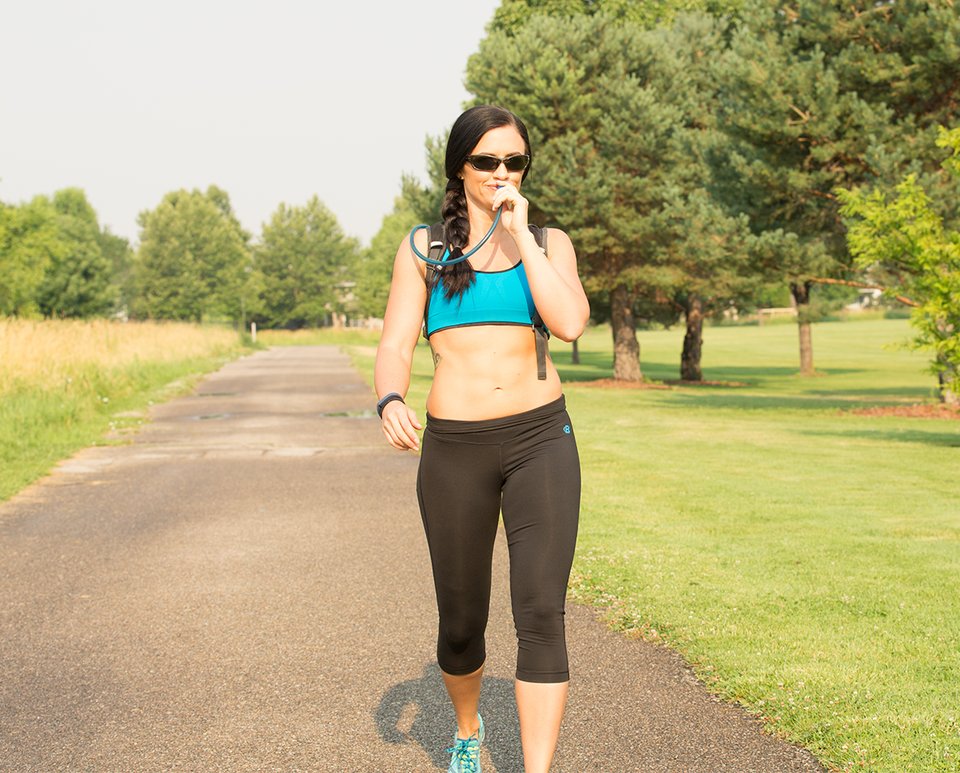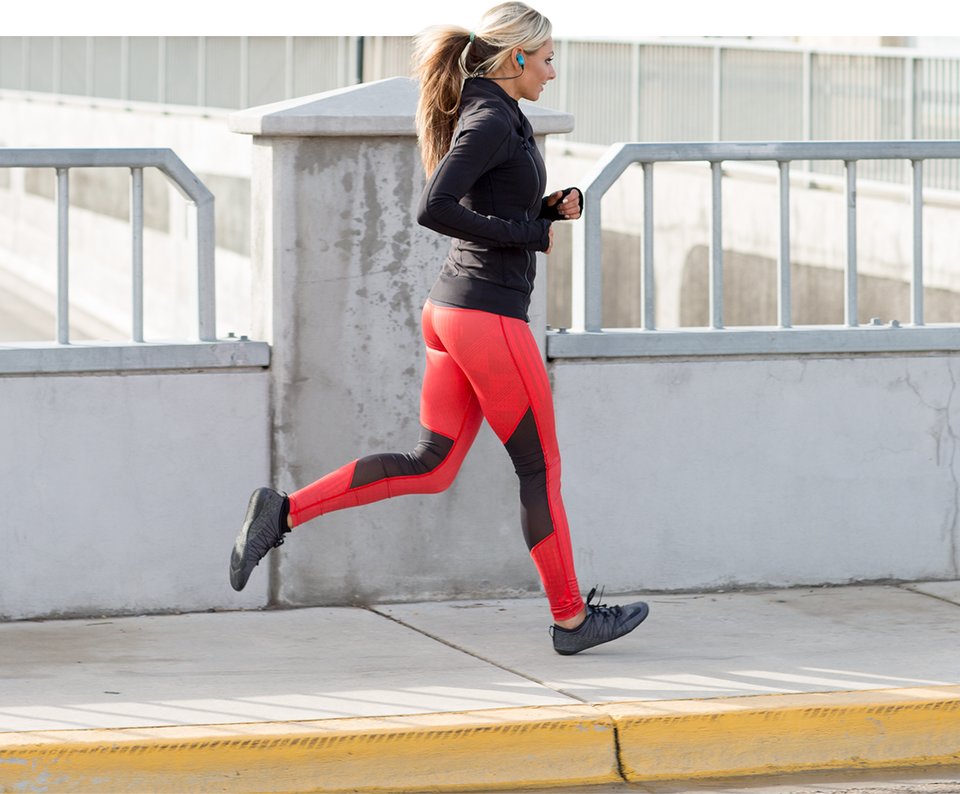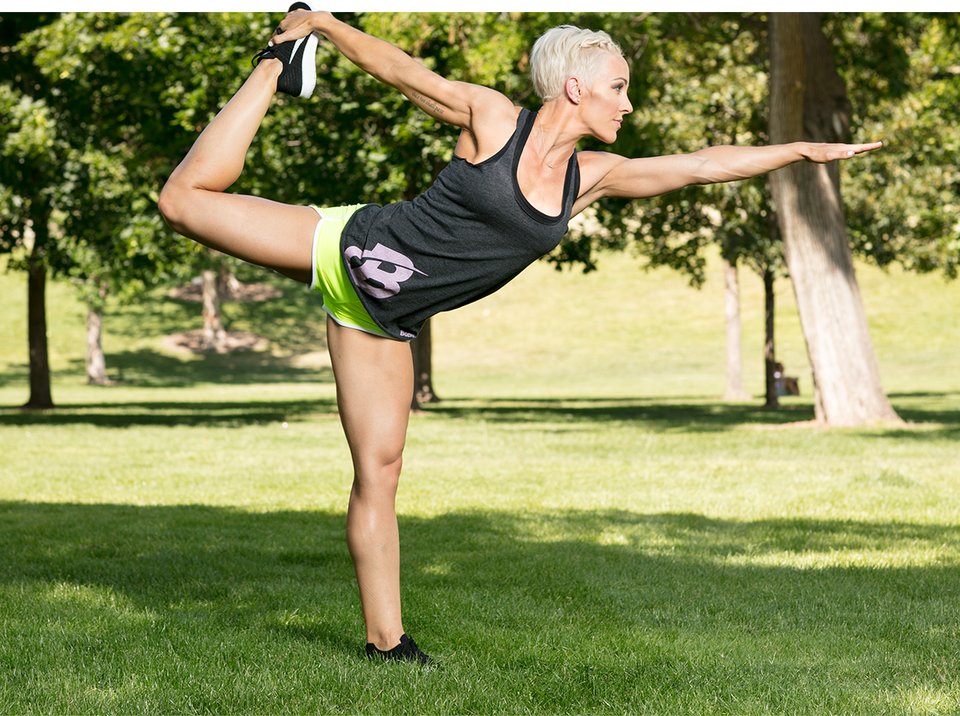On the surface, outdoor exercise seems fairly benign. Running down a trail couldn't possibly be as risky as curling heavy dumbbells or loading up the plates on the squat rack, could it?
Actually, it could. Mother Nature can be beautiful and relaxing, but she is not always friendly.
Between extreme temperatures, inclement weather, varied terrain, and creepy strangers, the uncontrolled environment of the great outdoors can lead to serious injury or even death. No joke. So before you head outside, brush up on your safety knowledge. Get the benefits of being outdoors—without the risks.
Be Smart About The Heat
"Exercising in warm weather is great for power-based activities," says Richard Wilcock, a strength coach and exercise studio owner with a master's degree in exercise science. "The increased temperature makes your muscles more pliable and less prone to injuries related to muscle stiffness."

That said, exercising in the heat is not without risks. According to a 2014 study published in Current Reviews in Musculoskeletal Medicine, the number of heat stroke deaths caused by sports exertion in the United States had doubled since 1975. More deaths were reported between 2005 and 2009 than during any other five-year period.[1]
The reality is, heat-related illness is real and scary, but it's also 100-percent preventable with the right planning and preparation.
- Try to avoid working out during the hottest hours of the day. Stick to mornings or evenings when possible.
- Wear lightweight apparel that wicks sweat away from your body and promotes drying.
- Wear light-colored clothing to reflect the sun.
- Stay hydrated: Carry water with you and drink several ounces every 10-15 minutes. If you're exercising at high intensity or for longer than an hour, use a sports drink with supplemental electrolytes.
- Acclimatize yourself to hot weather by gradually increasing your intensity and duration of exercise over the course of several weeks.
- Seek out shady areas to avoid direct sun exposure.
- Stop exercising if you start experiencing symptoms of heat-related illness.
"If you ever have symptoms of heat exhaustion, which precedes heat stroke, stop exercising and seek medical attention," Wilcock says. "Symptoms include dizziness, vomiting, headaches, profuse sweating, and weakness."
Protect Your Skin From Sunburn And Skin Cancer
Sunburns suck. They hurt and they look terrible. But the damage doesn't stop there. As someone who had her first skin cancer removed at age 25, and her second at 30, I cannot even begin to emphasize how important it is to wear sunscreen every time you head outside. Tans may look sexy now, but trust me, that appeal wears off when you have chunks of your skin removed.
The good news is, it's easy to prevent both immediate and delayed effects of sun damage.
- About 10 minutes before you head outside, apply sunscreen with an SPF of at least 30. Apply at least an ounce (shot-glass size) to exposed skin.
- Reapply sunscreen every 80 minutes if you're sweating. Note: Even waterproof versions don't hold up as long when you're wet.
- Wear UPF-rated apparel to further protect your skin.
- Don't forget to protect your scalp by wearing a hat or headband, especially if your hair is thinning.
- Skin cancers can also affect the thin skin around your eyes and lips, so wear full-spectrum UVA/UVB protective sunglasses and chapstick with SPF.
Be Aware Of Your Surroundings
Rocky trails and bad drivers are just a few of the dangers you'll encounter when exercising outside.
"The potential for injury is always increased when you leave the confines of the gym," Wilcock says. "Impact injuries caused by slips, falls, or collisions generally result from an accident, so they're harder to prevent."

But "harder" doesn't mean impossible; you just need to become a defensive exerciser.
- Wear high-visibility clothing. Choose apparel that's light and bright with reflective tape, even if you're exercising during daylight hours. And if you're working out at dawn or dusk, invest in a headlamp or other wearable light to make yourself more visible.
- Never assume a driver can see you. Even if you're wearing all the reflective clothing in the world, never make assumptions about your visibility. Stop before crossing streets or driveways when cars are around.
- Ditch the noise-canceling earbuds. Your favorite playlist may keep you motivated, but if you can't hear cars or people approaching, you're unlikely to identify threats before it's too late to react. If you can't imagine getting through a workout without your tunes, try wearing a single earbud instead of two, or invest in a pair of headphones, like the ones from Aftershokz, that leave your ears open to outside noise by using bone-conduction technology.
- Pay attention to your footing. From curbs to uneven sidewalks, tree roots to hard-to-see variations in terrain, the great outdoors doesn't always offer a smooth walkway. By paying close attention to your footing, you can avoid rolled ankles and unexpected falls. And if you're checking your phone, come to a stop. Just like texting while driving can lead to car wrecks, messing around with your phone can lead to accidents.
Watch The Weather
Weather can change at a moment's notice, and if you've ever been stuck a few miles from home in a drenching thunderstorm, you know it's an unpleasant experience. Even if it's reasonably nice out when you leave the house, make sure you check the weather before heading out. Aside from learning about storm risks, your favorite weather app can alert you to potentially dangerous humidity levels, allergen reports, or pollution levels, all of which can turn a good workout bad.
Protect Yourself From Predators
It's a sad reality that there are human predators out there bent on harming others. While you shouldn't live your life in fear, you should take steps to reduce your risk of being targeted. This is particularly true if you plan on exercising alone. Wilcock suggests three measures to follow to stay safe when exercising outside:
- Stick to public and well-lit areas. Avoid solitary trails or dark alleys.
- Keep your phone on you and fully charged. Not only can you use it to call for help if needed, you can also use apps like Glympse to share your location with others.
- Vary your routine. Aside from working out at different times on different days, take different routes or exercise at different parks to prevent potential predators from honing in on your typical routine.
Depending on where you live, you could encounter feral or loose dogs. There are products on the market designed specifically to protect humans from dogs, such as dog pepper spray and ultrasonic noise deterrents. Most importantly, if you run into a dog that seems hell-bent on destruction, don't turn your back on it or run away. Instead, stand your ground, turn sideways to the dog, avoid eye contact, move slowly, and try to get to a safe spot without panicking.
If a dog does run at you, try to give it something to bite that isn't you, like a stick or a sleeve of your sweatshirt with your arm removed. In the worst-case scenario, if a dog attacks, protect your face, neck, and torso. Better the dog bites your shin or forearm than those vital areas. Scream and fight back without yanking your body away, which could cause further damage.
Sweat The Small Stuff
Compared to dog attacks and skin cancer, blisters and chafing may seem trivial, but they're some of the most annoying and easy-to-prevent injuries that can come with outdoor exercise. Plus, even a small injury can halt a workout in its tracks and, if bad enough, interfere with exercise for extended periods of time.

Reduce the likelihood of developing blisters and chafing by wearing moisture-wicking socks and well-fitting shoes. Apply Vaseline or products like Body Glide to areas that experience lots of friction during activity; namely, between your thighs or around your armpits. When you're shopping for workout apparel, look for products with flat seams that won't rub and chafe.
No comments:
Post a Comment